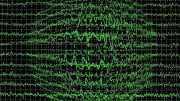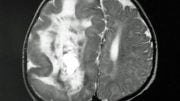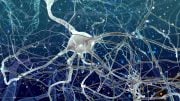
Epilepsy is a neurological disorder characterized by recurring seizures. Seizures are temporary disruptions of the electrical and chemical activity in the brain, leading to physical symptoms such as convulsions, muscle contractions, loss of consciousness, and changes in behavior. It is estimated to affect over 65 million people worldwide.
International research teams have uncovered a new cause for pediatric seizures: mosaicism, a condition in which cells within the same individual have different genetic compositions.
Approximately 4% of the population is affected by epilepsy, making it one of the most prevalent brain disorders among children. While modern medicine is effective in preventing seizures in the majority of patients, unfortunately, 20% of those with epilepsy do not respond to treatment.
In some cases, the cause of epilepsy may stem from patches of damaged or abnormal brain tissue known as “malformations of cortical development” (MCD). These MCDs result in a variety of neurodevelopment disorders. Surgical resection or removal of the patch can cure the seizures, and epilepsy surgery to improve neurological outcomes is now a key part of the modern medical armamentarium, but what causes the patches has largely remained a mystery.
In a recent paper published in Nature Genetics, researchers at the University of California San Diego School of Medicine and Rady Children’s Institute for Genomic Medicine, collaborating with an international consortium of more than 20 children’s hospitals worldwide, report a significant breakthrough in understanding the genetic causes of MCD.
Members of the Focal Cortical Dysplasia Neurogenetics Consortium investigated 283 brain resections from children across a range of MCD types, with parental consent, looking for potential genetic causes. Because most brain tissue in these children is normal, the scientists focused on mutations present in a small subset of brain cells, a phenomenon termed genetic somatic mosaicism.
“This was a decade-long journey, bringing specialists together from around the world, to recruit patients for this study,” said senior study author Joseph Gleeson, MD, Rady Professor of Neuroscience at UC San Diego School of Medicine and director of neuroscience research at the Rady Children’s Institute for Genomic Medicine. “Until recently, most hospitals did not study resected brain tissue for genetic causes. The consortium organized a biobank to store tissue for high-throughput mosaicism analysis.”
An international consortium led by UC San Diego has identified at least some of the genetic drivers of a mysterious form of pediatric epilepsy. Credit: UC San Diego Health Sciences
Previous research by Gleeson and colleagues had shown that genetic somatic mosaicism in the mTOR signaling pathway was a contributing factor, said co-first author Changuk Chung, PhD, a postdoctoral fellow in the Gleeson lab.
“But most patients remain undiagnosed, which hinders treatment. We tested for hidden mutations, detectable only by greatly expanding the cohort size and improving methods so that the results could be meaningful. We collaborated to solve technical and logistical bottlenecks. The pieces fell into place, but it took 10 years.”
The team conducted intensive genomic discovery using state-of-art somatic mosaic algorithms developed by the National Institutes of Health-sponsored Brain Somatic Mosaicism Network, of which UC San Diego is a member.
“We tried our best to detect mutations in as little as 1 percent of cells,” said co-first author Xiaoxu Yang, Ph.D., a postdoctoral scholar in Gleeson’s lab. “Initially we failed. To solve these problems, we needed to develop novel artificial intelligence methods to overcome barriers in sensitivity and specificity.”
The team ultimately identified 69 different genes carrying somatic brain mutations, the majority of which have never previously been reported in MCD.
“We can draw parallels with the cancer field because these mutations disrupt cellular function and need to be resected,” said co-first author Chung. “However, unlike cancer cells, brain cells mostly do not divide so these cells misbehave by stimulating epileptic seizures. The question that arose was whether the newly found gene mutations were sufficient to cause MCD disease.”
Gleeson said the scientists found that the genes converged on calcium signaling, gene expression, and synaptic functions, and noted that when the mutations were introduced into a mouse model, abnormalities similar to those seen in patients were observed. The study authors suggest the findings could be used to improve diagnosis and develop cures for MCD disease.
“The MCD genes in patient brains have demonstrated critical roles during cortical development,” said Gleeson. “These findings could lead to new molecular classifications for MCD, and ultimately to personalized therapies for epilepsy.”
Reference: “Comprehensive multi-omic profiling of somatic mutations in malformations of cortical development” by Changuk Chung, Xiaoxu Yang, Taejeong Bae, Keng Ioi Vong, Swapnil Mittal, Catharina Donkels, H. Westley Phillips, Zhen Li, Ashley P. L. Marsh, Martin W. Breuss, Laurel L. Ball, Camila Araújo Bernardino Garcia, Renee D. George, Jing Gu, Mingchu Xu, Chelsea Barrows, Kiely N. James, Valentina Stanley, Anna S. Nidhiry, Sami Khoury, Gabrielle Howe, Emily Riley, Xin Xu, Brett Copeland, Yifan Wang, Se Hoon Kim, Hoon-Chul Kang, Andreas Schulze-Bonhage, Carola A. Haas, Horst Urbach, Marco Prinz, David D. Limbrick Jr., Christina A. Gurnett, Matthew D. Smyth, Shifteh Sattar, Mark Nespeca, David D. Gonda, Katsumi Imai, Yukitoshi Takahashi, Hsin-Hung Chen, Jin-Wu Tsai, Valerio Conti, Renzo Guerrini, Orrin Devinsky, Wilson A. Silva Jr., Helio R. Machado, Gary W. Mathern, Alexej Abyzov, Sara Baldassari, Stéphanie Baulac, Focal Cortical Dysplasia Neurogenetics Consortium, Brain Somatic Mosaicism Network and Joseph G. Gleeson, 12 January 2023, Nature Genetics.
DOI: 10.1038/s41588-022-01276-9
The study was funded by the National Institutes of Health, the San Diego Supercomputer Center, and the UC San Diego Institute of Genomic Medicine.









Be the first to comment on "Researchers Identify Cause of Mysterious Cases of Childhood Epilepsy"